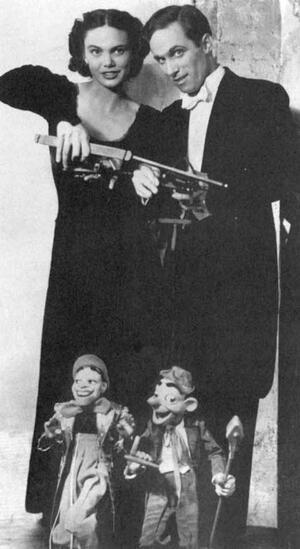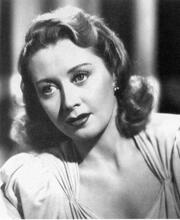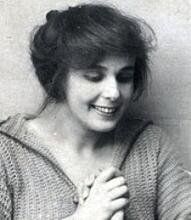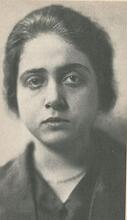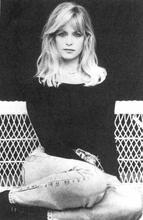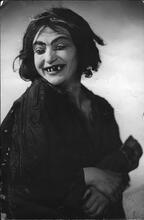Cora Baird
Though she studied dance with Martha Graham and was a member of the legendary Group Theatre, Cora Baird (1912-1968) found her ultimate destiny linked with her husband and the Bill & Cora Baird Marionettes. Together they performed for vaudeville, Broadway, television and industrial film audiences, entertaining and teaching hundreds of thousands of children and adults.
Institution: Private collection
In a reverse of the usual sequence of events, Cora Eisenberg Baird started playing with dolls when she grew up and married puppeteer Bil Baird. Baird studied dance with Martha Graham before joining the notable Group Theatre. She appeared in many Broadway shows before meeting Bil Baird and becoming a full partner in Bil & Cora Baird Marionettes. They performed at the 1939 and 1940 World’s Fairs and in the 1941 Ziegfeld Follies. In the 1940s and 1950s, they created educational and public service films. Always supportive of fellow creators, Baird also founded the American Puppet Arts Council. In 1965, the Bairds opened the Bil Baird Theatre and created one of their best-known pieces, the “Lonely Goatherd” sequence for The Sound of Music.
Cora Baird was half of the world-renowned Bil & Cora Baird Marionettes.
Early Life and Family
She was born Cora Eisenberg on January 26, 1912, in New York City to Morris and Anne (Burlar) Eisenberg. As a toddler, she was nicknamed “Jimmy Canigo” by her family because, according to her sister, “That’s all she ever said: ‘Gimme!’ and ‘Can I go?’”
She attended Hunter College, where she pursued her interest in theater. After college, she studied dance with Martha Graham and was accepted as member of the prestigious Group Theatre, whose roster included Elia Kazan, Clifford Odets, Sanford Meisner, and Morris Carnovsky (who, thirty years later, narrated the Baird production of L’Histoire du Soldat). She taught the Graham dance technique at the Toy Theater and performed in a number of their productions. She appeared on Broadway in Noah with Pierre Fresnay of the Comédie Française and with Eva Le Gallienne’s Civic Repertory Theatre.
Partnership with Bil Baird
In 1937, while working on a production of Dr. Faustus directed by Orson Welles, Cora performed the voices of the seven deadly sins. It was during this production that she met Bil Baird, who had created the puppets of the sins. They were married four weeks later on January 13, 1937. After their marriage, she decided to give up her career in the “legitimate” theater and join Bil in his troupe, where she became a full partner. The company became Bil & Cora Baird Marionettes. “My own backyard became a lot more interesting than traipsing the streets for eleven months to get two weeks work, so I switched.” According to friends, after their meeting, Bil’s female puppets began to look more and more like Cora. Together, they played the vaudeville circuit, produced shows for the Swift Pavillion at the 1939 and 1940 World’s Fair, created and performed numerous industrial shows, and were part of the Broadway production of the Ziegfeld Follies of 1941.
Film and Television Work
During the 1940s and 1950s, the Bairds produced a string of industrial films teaching children about nutrition (The Story of Wheat, Gardening Is Fun), how to use the telephone (Party Lines, Adventures in Telezonia), hygiene, and food handling (A Boy and His Cow).
In the 1950s, the Bairds produced shows using the new technology called television. Their biweekly fifteen-minute programs, Life with Snarky Parker and The Bil Baird Show, created formats for children’s programming that have endured to the present day, in addition to appearing regularly on The Morning Show and The Ed Sullivan Show. An interesting sidebar to this period (the McCarthy era) was the opportunity for Cora Baird to employ the talents of artists who had been blacklisted from employment in areas of the entertainment industry that were considered more “legitimate” than children’s entertainment. In addition to their TV shows, the Bairds produced live children’s shows that appeared on Broadway (Davy Jones’ Locker, Ali Baba and the Forty Thieves, The Man in the Moon).
Later Career, Touring, and Legacy
In 1965, the Bairds realized a longtime dream when they opened the Bil Baird Theatre. This was the first Actors Equity repertory theater created exclusively for puppets. The theater ran continuously for eleven years under the auspices of the American Puppet Arts Council, a nonprofit organization that Cora was instrumental in creating, dedicated to furthering the art of the puppet in this country. A total of twenty-eight productions were staged and somewhere in the neighborhood of 240,000 children and adults were introduced to the enchanting world of the puppet.
The Bairds toured India, Afghanistan, and Nepal for the United States Information Agency and toured Russia for the U.S. Cultural Exchange program that was one of the first acts of both countries beginning the end of the Cold War. Cora was moved immensely by the people of these countries and the hardships with which they lived. In India, she was stunned by the “spirit of people who maintained such dignity in the face of such incredible poverty.” In Russia, she was moved to tears and visibly shaken when she was “very unofficially” shown a synagogue that had been closed and boarded up. She was incredulous at the concept of “outlawing of a faith.”
Cora was diagnosed with lung cancer in the mid-1960s. For the majority of those years, she continued to perform in the shows presented at the Bil Baird Theatre. She performed for the last time in Winnie the Pooh, in December 1967, a week before her death.
NYTimes, December 7, 1967, 52:4.
WWWIA 5.

